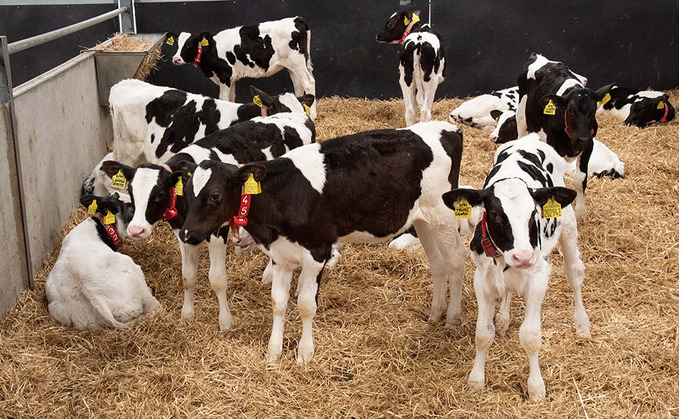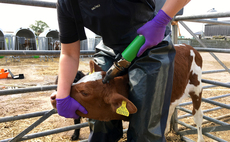
When it comes to tackling the two most common conditions which affect calves, scours and pneumonia, prevention should always be the top priority, according to Boehringer Animal Health.
Even on the best of farms, some cases of scours and pneumonia are bound to crop up.
An effective treatment protocol will ensure affected calves do not suffer too much of a set back and they get back to full health as quickly as possible.
But what should a treatment protocol look like?
The idea behind written treatment protocols is to do the thinking in advance, so whenever a calf gets sick, you can swing straight into action with the most appropriate treatment.
Protocols are the most successful when the people who will be implementing them are involved in their design, alongside their vet. This ensures the protocol is both effective and practical, designed around the farms individual circumstances.
Protocols should be printed and displayed in the calf shed, but they are not set in stone forever. Treatment options change and best practice recommendations evolve as our knowledge expands, so an annual review with a vet is really valuable.
While each farm protocol should be unique, there will be certain common elements.
Anti-inflammatories or non-steroidal anti-inflammatory drugs (NSAIDs), such as Metacam, are an important part of
treatment protocols for calves suffering from scour or pneumonia.
NSAIDs have several beneficial effects:
- NSAIDs provide pain relief.
- They reduce inflammation.
- And they tackle fever.
Scours and pneumonia are painful, inflammatory conditions. Calves with pneumonia also usually have a fever, so it is clear that NSAIDs have an important role to play.
NSAIDs do not tackle the cause of the disease, but by tackling pain, inflammation and fever, they make the calf feel better and recover more quickly when used alongside antibiotics for pneumonia, or oral fluid therapy for scours, in calves over a week of age1,2.
An experienced calf rearer will generally know how to treat common conditions, but a written treatment protocol, reviewed every year, can help ensure any sick calf gets the right treatment every time, and has the best chance of bouncing back to full health as soon as possible.
References
1. Todd et al (2010) Nonsteroidal anti-inflammatory drug therapy for neonatal calf diarrhea complex: Effects on calf performance. J Anim Sci.88:2019-2028.
2. Schmidt et al (2000) The effect of Metacam (meloxicam) on the course of acute respiratory disease in bovines. Proceedings of XXI WBC, Uruguay.



























